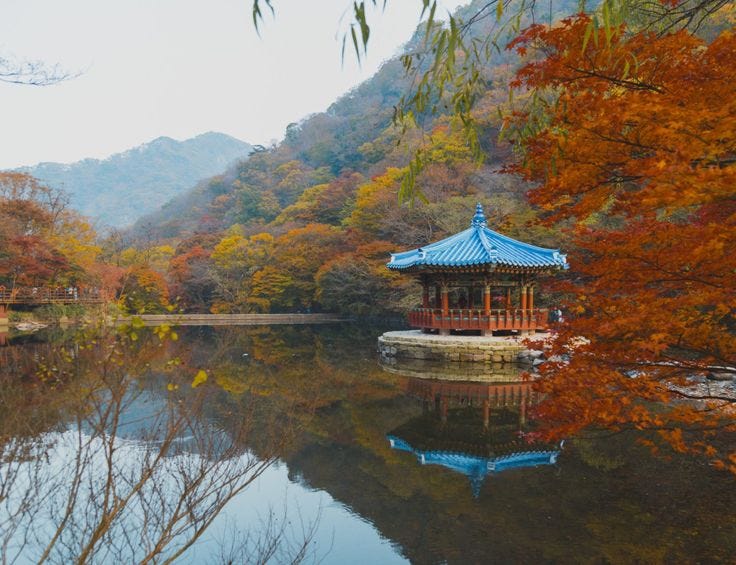#31: The Joseon Dynasty
The Joseon Dynasty ruled the Korean Peninsula for just over 500 years, beginning in 1392 and ending in 1897 with the accession of the Korean Empire. This 500-year period of Korean history saw the introduction of the philosophy of Neo-Confucianism, represented the origin of the “hermit kingdom”, and in many ways is the inspiration for much of modern-day Korean culture.
ORIGINS
Toward the end of the 14th century, the Goryeo dynasty of Korea was beginning to crumble - it is here that we find the origins of the Joseon dynasty. The Goryeo dynasty was impacted by spillover from ongoing conflicts between the Yuan & Ming dynasties vying for control of China. Emissaries from Ming China upset the Goryeo court by demanding the return of lands which the Goryeo had recaptured from the Mongols; these demands gave the pro-conflict faction in the Korean court the upper hand over the pro-neutral faction. An invasion of the Liaodong Peninsula, just west of the Korean Peninsula, was embarked upon - some members of the Goryeo viewed this land as rightfully their own.
The general instructed to lead this invasion revolted and successfully led a coup against the ruling dynasty, implementing his own - he is known as Taejo, the first ruler of the country now known as Joseon in tribute to the ancient Korean state of Gojoseon. He moved the capital to the current-day site of Seoul, South Korea’s current capital.
The effect of ruling through the sword compounded to the next generation. Taejo was father to many sons, and after claiming the throne for himself, much thought was given to who should be the crown prince (the first-born son was not automatically the crown prince in the Joseon dynasty; it shares this with the Mongols). Given the size of the prize, a small-scale civil wars began with different princes vying for the position of dauphin, enforcing their claim with their own private armies - this period is know as the “Strife of Princes”, known for its brutality and numerous cases of fratricide.
King Taejo was so distraught at the lengths his sons were willing to go in order to be his heir, as well as at the death of his second wife, that he voluntarily abdicated and installed his second son Yi Bang-gwa as the new king. This did not put a stop to the fighting however - it continued in its ferocity and forced the abdication of the second king in favour of Taejong, known prior to his kingship as Yi Pang-won. He was instrumental in overthrowing the Goryeo dynasty and saw these efforts as proof that he was best placed to succeed his father. He also believed that the King should rule as an absolute ruler, rather than in accordance with a council of ministers. As king, Taejong prohibited private armies so well enjoyed by the aristocracy (and minimised the chance of another Strife of Princes situation occurring), and discovered an accounting fraud within the upper echelons of Joseon society which prevented land from being taxed correctly - reversing this scheme doubled Joseon’s national tax income. He was the father to Sejong the Great, known for expanding Joseon’s land and eliminating the pirates operating from the Japanese island of Tsushima.
NEO-CONFUCIANISM
Neo-Confucianism was the state religion of the Joseon dynasty, with the system of belief being introduced during the Yuan dynasty’s occupation of the peninsula. Neo-Confucianism is a rationalistic ethical philosophy, with a focus on metaphysics. Essentially, the main thrust of this philosophy is that humanity as a whole must work to create harmony between itself and universe; this peace with the natural world is pursued at an individual level. Neo-Confucianism rejected two key elements of traditional Confucianism: it rejects the more mystical elements of Buddhism and Toaism (both of which we’ll cover in a later edition of the blog) to focus on rationalism, and it rejected the gender roles proscribed in the traditional form which led to the diminishment of women’s role in wider society across Joseon. This second element is an issue in modern-day Korea; while the recognition that women’s role in society should be more than being a subservient housekeeper has been accepted, some Korean women adhere to the 4Bs, which translates roughly to the 4 “No”s. This feminist practice essentially insulates adherents from forming personal attachments with heterosexual men, especially matrimony and parenthood; this outlook has gone viral in the United States in recent weeks.
Neo-Confucians believe that reality as we understand it does truly exist, and that individuals can begin to understand it from their unique point of view - this all runs in direct contrast to traditional Buddhism and Confucianism. A focus on absorbing knowledge from texts rather than from experiences in life also came about from Neo-Confucianism. I have little to no knowledge of contemporary Western philosophies so I can’t draw a strong comparison, but from what I’ve read, it does seem that Rene Descartes and the Neo-Confucians have some overlapping ideas.
THE HERMIT KINGDOM
A hermit kingdom is an epithet used to describe nations which are extremely isolationist, modern-day North Korea being a prime example. Joseon was the first nation to be described as such, with the nickname coming from Korea: The Hermit Kingdom, written by William Elliot Griffis & published in 1882.
Joseon started to become more isolated from the world as internal factionalism and invasions from the east and north began to occur more frequently. The Korean Peninsula has been long prized for its strategic position: if you’re a warlord looking to grow your empire in either Japan or mainland China, Korea is a great stepping stone no matter the direction. Repeated Japanese invasions after the ascension of the shoguns in their quest to invade mainland China, as well as invasions from the north by the Jurchens, led to Joseon being very withdrawn. Their approach can be summed up by the invention of “turtle ships”, naval warships which were heavily armoured (they even had reinforced roofs), a slow ship with a lot of firepower, and said to resemble a turtle.
After these invasions and an acceptance of the Ming dynasty’s mastery of the civilised world, Joseon had two centuries of peace. During this time many of the procedures and attitudes that modern-day Korea has toward bureaucracy & administration were established in “Silhak”, meaning “Practical Learning”. The key champion of this new approach was Kim Yuk, Chief Minister under King Hyeonjong. The focus of Silhak was to improve the efficiency of the public service by increasing the difficulty of exams and overhauling the manner of taxation and the method of exploring scientific ideas in the areas of agriculture and natural sciences. This led to a renaissance of the Joseon Kingdom - the lot of average citizens improved, royal libraries were established, meritocracy was introduced bit-by-bit… this period of time was similar to the Renaissance which began in Florence on the Italian Peninsula only 150 years earlier.
ENDINGS
The Joseon Dynasty drew to a close in October 1897 when the Korean Empire was established - by 1910, the Korean Peninsula had been annexed by the Japanese Empire. That empire would go on to be the first Asian power to comprehensively defeat a leading European power, laying defeat at the foot of the Russians. It would take the collapse of the Japanese Empire in the 1940s for the people of Korea to govern themselves again, so it’s no wonder that the Joseon period of their history is so powerfully recalled here in the 21st century - it was essentially the last time Koreans ruled themselves. In the future we’ll do another blog post about South Korea’s soft power in the modern-day, and after learning about this period of their history, I imagine a lot of that soft power will have its roots in the Joseon dynasty.







